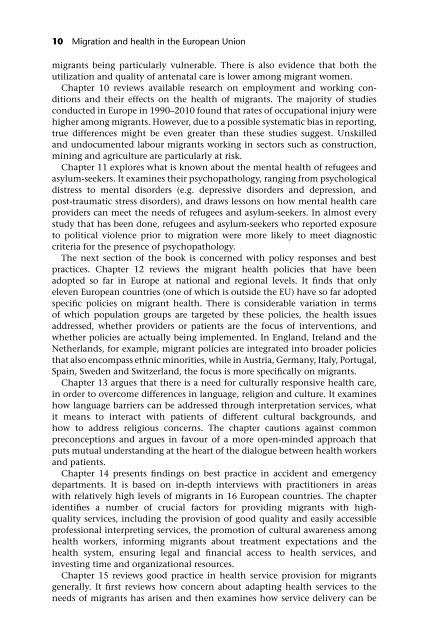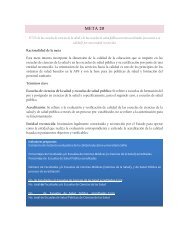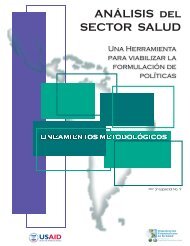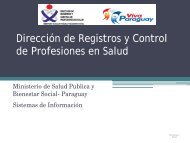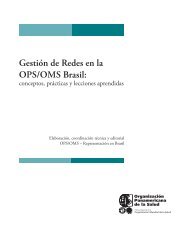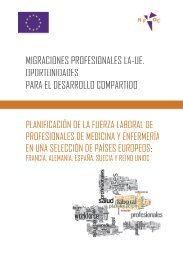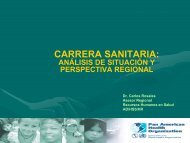English - World Health Organization Regional Office for Europe
English - World Health Organization Regional Office for Europe
English - World Health Organization Regional Office for Europe
Create successful ePaper yourself
Turn your PDF publications into a flip-book with our unique Google optimized e-Paper software.
10 Migration and health in the <strong>Europe</strong>an Union<br />
migrants being particularly vulnerable. There is also evidence that both the<br />
utilization and quality of antenatal care is lower among migrant women.<br />
Chapter 10 reviews available research on employment and working conditions<br />
and their effects on the health of migrants. The majority of studies<br />
conducted in <strong>Europe</strong> in 1990–2010 found that rates of occupational injury were<br />
higher among migrants. However, due to a possible systematic bias in reporting,<br />
true differences might be even greater than these studies suggest. Unskilled<br />
and undocumented labour migrants working in sectors such as construction,<br />
mining and agriculture are particularly at risk.<br />
Chapter 11 explores what is known about the mental health of refugees and<br />
asylum-seekers. It examines their psychopathology, ranging from psychological<br />
distress to mental disorders (e.g. depressive disorders and depression, and<br />
post-traumatic stress disorders), and draws lessons on how mental health care<br />
providers can meet the needs of refugees and asylum-seekers. In almost every<br />
study that has been done, refugees and asylum-seekers who reported exposure<br />
to political violence prior to migration were more likely to meet diagnostic<br />
criteria <strong>for</strong> the presence of psychopathology.<br />
The next section of the book is concerned with policy responses and best<br />
practices. Chapter 12 reviews the migrant health policies that have been<br />
adopted so far in <strong>Europe</strong> at national and regional levels. It finds that only<br />
eleven <strong>Europe</strong>an countries (one of which is outside the EU) have so far adopted<br />
specific policies on migrant health. There is considerable variation in terms<br />
of which population groups are targeted by these policies, the health issues<br />
addressed, whether providers or patients are the focus of interventions, and<br />
whether policies are actually being implemented. In England, Ireland and the<br />
Netherlands, <strong>for</strong> example, migrant policies are integrated into broader policies<br />
that also encompass ethnic minorities, while in Austria, Germany, Italy, Portugal,<br />
Spain, Sweden and Switzerland, the focus is more specifically on migrants.<br />
Chapter 13 argues that there is a need <strong>for</strong> culturally responsive health care,<br />
in order to overcome differences in language, religion and culture. It examines<br />
how language barriers can be addressed through interpretation services, what<br />
it means to interact with patients of different cultural backgrounds, and<br />
how to address religious concerns. The chapter cautions against common<br />
preconceptions and argues in favour of a more open-minded approach that<br />
puts mutual understanding at the heart of the dialogue between health workers<br />
and patients.<br />
Chapter 14 presents findings on best practice in accident and emergency<br />
departments. It is based on in-depth interviews with practitioners in areas<br />
with relatively high levels of migrants in 16 <strong>Europe</strong>an countries. The chapter<br />
identifies a number of crucial factors <strong>for</strong> providing migrants with highquality<br />
services, including the provision of good quality and easily accessible<br />
professional interpreting services, the promotion of cultural awareness among<br />
health workers, in<strong>for</strong>ming migrants about treatment expectations and the<br />
health system, ensuring legal and financial access to health services, and<br />
investing time and organizational resources.<br />
Chapter 15 reviews good practice in health service provision <strong>for</strong> migrants<br />
generally. It first reviews how concern about adapting health services to the<br />
needs of migrants has arisen and then examines how service delivery can be


